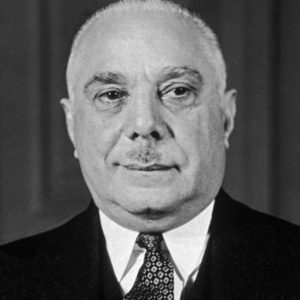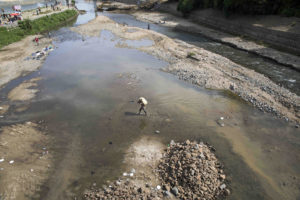The Dominican Republic is known for its beautiful Caribbean waters and lively culture; however, the physical beauty that impacts tourism masks the internal realities of racism, poverty and skewed immigration policies.
One Island, Two Divided Countries
The island of Hispaniola is home to the Dominican Republic on the eastern side and Haiti on the western side. Each country has cultural differences, yet historically, some similarities have influenced the long-term division on the island, including intertwined histories of conquest and colonization.
The Dominican Republic has a history of racism against Haitians, known as “antihaitianismo.” During the 20th century, waves of Haitians crossed into the wealthier Dominican Republic to escape poverty and political instability. Rather, Haitian immigrants experienced colorism and repression.

From 1930 to 1961, the Dominican Republic president Rafael Trujillo developed a radicalized concept of Dominican national identity. According to an article from The Atlantic, Trujillo claimed that the descendants of Spanish slavery on the eastern part of the island had higher levels of European blood than the descendants of French slavery on the western side.
In 1937, this nationalistic belief led to a Trujillo-organized massacre, the Parsley Massacre. Dominican soldiers would carry around stems of parsley and ask people suspected of being Haitian to pronounce the Spanish word for parsley, “perejil.” Those who spoke Haitian Creole as their first language had difficulty saying the word correctly, and they were punished for it. In a span of five to eight days, thousands of Haitian families and Dominicans of Haitian descent living along the border were executed, according to an NPR article.
Suddenly Stateless
Haitian migrants in the Dominican Republic remained largely confined to isolated towns in the cane fields and worked as farmers. In the late 20th century, Haitian immigrants and their Dominican-born children ended up moving to other parts of the country to find other jobs. Nationalists who had been exposed to Trujillo’s propaganda began to rethink the country’s immigration policies, which renewed tensions in the Dominican Republic.
In 2010, the Dominican constitution was revised, stripping citizenship from Dominican-born children of undocumented Haitian immigrants, according to the Council of Hemispheric Affairs. In 2013, a lawsuit challenged the government to validate the citizenship of Dominicans born to undocumented Haitian parents, at least before 2010. Human rights advocates suggested that those who had already been granted citizenship should be able to keep it. The Dominican Supreme Court decided to remove citizenship from anyone born to undocumented immigrants after 1929.
Due to backlash from the Inter-American Commission on Human Rights and similar organizations, the Dominican government agreed to come up with a plan to regularize the status of the affected individuals in May 2014. The requirement was that individuals had to prove their birth in the Dominican Republic. This was a fairly simple task if their births were registered in the civil registry because they could obtain a cédula, a document that lists the ethnicity, race and immigration status and allows individuals to receive a Dominican passport if legally qualified through citizenship.
However, most Dominicans of Haitian descent did not have their births registered in a civil registry due to language barriers or fear of getting deported. Dominicans that could not prove their births had to obtain multiple identification papers and witness signatures from Dominican citizens confirming their birthplace. The government’s actions left at least 210,000 individuals essentially nonexistent on paper.
Life at the Border

Haiti is still experiencing effects from the catastrophic earthquake in 2010. The country is physically and economically unable to accommodate the waves of people crossing the border into Haiti. Several tent cities and shelters can be found along the Haitian border where deportees experience malnutrition, poor sanitation and a lack of clean water.
Similar conditions exist in Ouanaminth, Haiti, which faces the town of Dajabón, the largest Dominican border crossing. According to VICE News, Dajabón is the site where Trujillo’s soldiers executed 20,000 Haitians living in the Dominican Republic. Furthermore, the river that runs through Dajabón, known as the Massacre River, was the site of bloody colonial battles in the 1600s.
On Mondays and Fridays, the border gates open in the morning and remain open until the evening for Haitians to come to Dajabón to buy and sell what they could at the binational market. It is a place for cultural exchange, for Dominicans also trade with Haitians. In March 2019, I visited the binational market in Dajabón and witnessed the opening of the gates.
 Before Dominican guards opened the gates at 8 a.m., I saw hundreds of Haitians lined up behind the gate, and the line of people waiting seemed to go on forever. No one was allowed to enter early, except for Haitian children who attend school in Dajabón. When the border gate finally opened, it was chaotic. Haitians ran into the streets, as if it were a race, to get the best spots in the market.
Before Dominican guards opened the gates at 8 a.m., I saw hundreds of Haitians lined up behind the gate, and the line of people waiting seemed to go on forever. No one was allowed to enter early, except for Haitian children who attend school in Dajabón. When the border gate finally opened, it was chaotic. Haitians ran into the streets, as if it were a race, to get the best spots in the market.
Many Haitian men entered on motorcycles with empty water jugs attached. I remember Dominican guards turning Haitians away if they were not wearing helmets. The guards also stopped people randomly, rummaged through their belongings and even became aggressive at times. To be left alone, Haitians would often give money to officers, either willingly or forcefully.
The Call for Justice is Being Heard
The Jesuits, founded by Saint Ignatius of Loyola, are known for their social justice and
service work around the world. Their influence in the Dominican Republic is significant. The Jesuits have developed schools and radio educational programs for impoverished families. To combat discrimination of Haitians and the controversial immigration laws, the Jesuits have established organizations, including Centro Montalvo, which advocates for the rights of migrant workers. Additionally, Centro Montalvo provides legal assistance to Haitians living in the Dominican Republic and helps them to obtain passports and other legal documents.
Despite the challenges that I observed at the border and the binational market, I will never forget the smiles that Haitians had on their faces as they were running to claim their spot. I saw nothing but strength and resilience, despite all of the setbacks that Haitians have experienced throughout history. I learned that history tends to repeat itself, and that is why it is crucial to know it.


Recent Comments